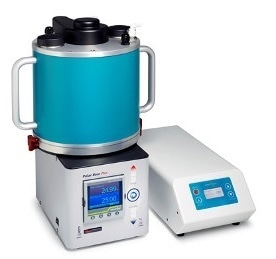Uniqsis announces its PhotoSyn™ high-power photoreactor light module for continuous flow chemistry is now available with alternative LED array configurations that makes it compatible with a broader range of photochemical reactions.

The availability of 3 new alternative switchable LED configurations (Blue, UVA-Blue and Blue-Green-White) provides chemists with the unique ability to optimally undertake almost any photochemistry reaction. The operating wavelengths of the 3 LED array configurations are Blue (455 nm), Blue-green-white (455 nm, 530 nm and 420-700 nm) and UVA-blue (365 nm and 455 nm).
The curved, water-cooled LED arrays in the PhotoSyn™ are designed to maximize photon intensity and concentrate the available light on the independently temperature controlled central coil reactor. These high-quality LED’s have lifetimes of several years in continuous use without suffering a significant reduction in intensities.
The PhotoSyn™ incorporates a cooling fan to minimize undesirable radiative heating of the flow reactor whilst being cleverly engineered to completely prevent potentially hazardous light emissions from the unit, thereby avoiding the need to operate the instrument in a shielded enclosure. Moreover, the PhotoSyn™ is protected with safety interlocks that deactivate the light source and protect the user if any attempt is made to remove the cover whilst in use.
The PhotoSyn™ is compatible with both the Uniqsis Cold Coil™ standalone reactor module and the Polar Bear Plus Flow™ cryogenic flow reactor, which control the coil reactor temperature independently of the lamps. Reactions may be run from 150°C down to sub-ambient temperatures dependent upon the power of the cooling unit used. The variable power supply allows the lamp power output to be adjusted from 10-100% making the unit suitable for both small scale R&D and scale-up applications.